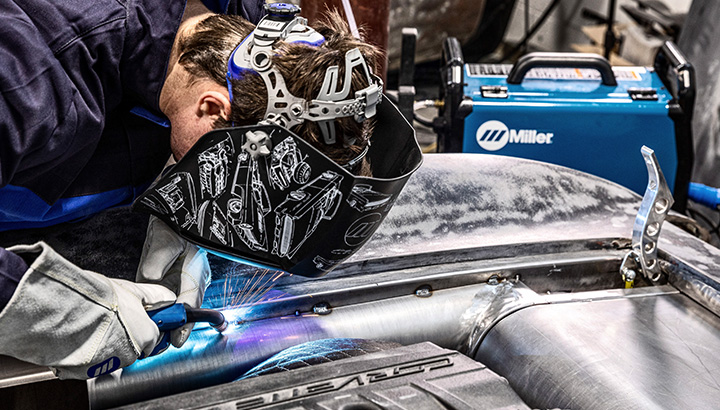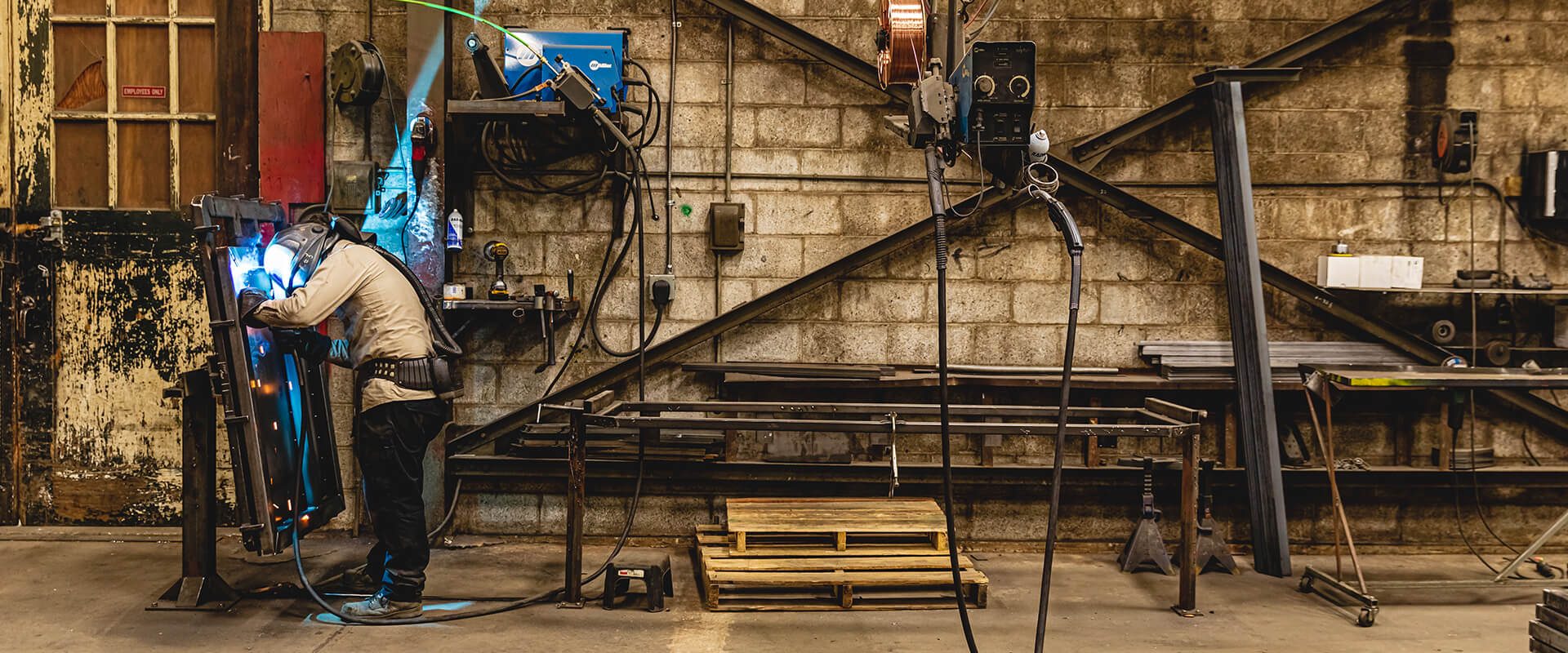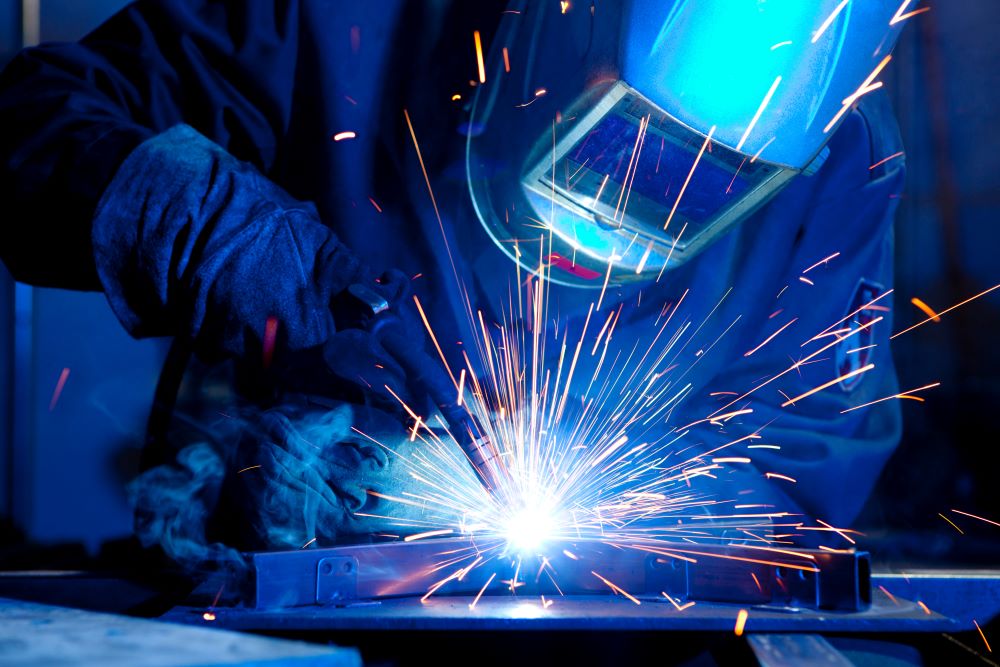Usual Welding Repair Work Issues and How to Address Them Properly
Welding fixings usually experience a range of problems that can jeopardize the honesty of the last product. Typical problems include inadequate penetration, porosity, and misalignment, amongst others. Each issue offers unique challenges that require certain methods for resolution. Recognizing these issues is vital for welders aiming to boost their results and skills. This discussion will certainly explore these common welding fixing problems and effective techniques to resolve them.
Inadequate Infiltration
Inadequate infiltration occurs when the weld metal fails to completely fuse with the base product, leading to weak joints and potential architectural failings. This problem commonly stems from not enough heat input, wrong electrode angle, or incorrect welding speed. Welders may encounter inadequate penetration due to a miscalculation of the needed parameters for a specific product density or kind. In addition, contamination on the base product's surface can impede effective bonding, exacerbating the trouble. To address poor penetration, welders ought to assure suitable setups on their devices and keep a clean job surface. Routine evaluation of welds is advised to determine any kind of deficiencies early, enabling for timely improvements and the prevention of jeopardized structural stability in welded settings up.
Porosity
Porosity is a common problem in welded joints that shows up as little gas bubbles trapped within the weld metal. This issue can endanger the stability of the weld, causing decreased toughness and prospective failing under tension. Montana Mobile Welding and Repair Belgrade. Porosity normally occurs from contamination, moisture, or inappropriate welding techniques, which enable gases to leave right into the molten weld pool. To resolve porosity, welders must guarantee correct surface preparation, maintain a clean working atmosphere, and utilize appropriate welding specifications. In addition, selecting the ideal filler product and protecting gas can minimize gas entrapment. Routine examination and screening of welds can aid identify porosity early, assuring timely restorative actions are taken, thereby preserving the quality and integrity of the bonded framework
Misalignment
Imbalance in welding can develop from numerous elements, including incorrect configuration and thermal expansion. Recognizing the source is necessary for effective resolution. A number of modification methods are readily available to realign parts and guarantee structural integrity.
Root causes of Imbalance
Welding imbalance frequently comes from a variety of underlying problems that can endanger architectural integrity. One primary cause is improper fit-up of parts prior to welding, which can lead to gaps and uneven surfaces. Variations in thermal expansion throughout the welding process can also cause distortion, specifically if the materials being signed up with have various coefficients of growth. Furthermore, inadequate securing and fixturing might fall short to hold parts safely in area, leading to activity during welding. Inadequately conserved equipment, including welding makers and devices, might introduce disparities in the weld grain, additional contributing to misalignment. Operator mistake, stemming from not enough training or experience, can also play a significant duty in developing misaligned welds.

Improvement Methods Offered
Attending to imbalance efficiently calls for a combination of restorative techniques tailored to the certain concerns at hand. One common technique is the usage of components or jigs to hold components in the correct setting throughout welding, making sure constant placement. Additionally, pre-heating the materials can help in reducing distortion and improve fit-up. For significant imbalance, mechanical realignment methods, such as using hydraulic jacks or clamps, can be utilized to correct the position prior to welding. Post-weld warmth therapy may additionally be needed to soothe stress and anxieties brought on by imbalance. Mindful evaluation and adjustment throughout the configuration phase can prevent misalignment concerns from ending up being substantial issues, advertising a smoother welding procedure and enhancing general architectural honesty.
Distortion
Distortion is a common challenge in welding that can emerge from different aspects, consisting of irregular heating & cooling. Understanding the sources of distortion is necessary for implementing efficient prevention strategies. Resolving this concern not just enhances structural stability yet likewise improves the total high quality of the weld.
Root causes of Distortion
When based on the extreme warm of welding, materials typically undertake adjustments that can result in distortion. This phenomenon primarily arises from thermal development and tightening throughout the welding procedure. As the weld area heats up, the material increases; upon air conditioning, it gets, which can create interior tensions. Additionally, unequal home heating across a workpiece can exacerbate these anxieties, causing bending or flexing. The type of product also plays a significant role; metals with varying thermal conductivity and coefficients of growth may react differently, causing unforeseeable distortions. Furthermore, poor joint layout and insufficient fixturing can contribute to misalignment throughout welding, boosting the possibility of distortion. Understanding these reasons is important for effective welding repair service and avoidance approaches.
Avoidance Techniques
Efficient prevention techniques for distortion during welding emphasis on controlling warmth input and ensuring correct joint style. Keeping a constant warmth input helps to reduce thermal growth and contraction, which can lead to distortion. Using methods such as pre-heating the work surface can additionally reduce the temperature slope, advertising uniform heating. Additionally, picking ideal joint designs, such as T-joints or lap joints, can boost security and minimize stress focus. Carrying out appropriate fixturing to safeguard the workpieces in position further aids in preserving positioning during the welding procedure. Staggered welding series can disperse warmth a lot more evenly, protecting against local distortion. By using these approaches, welders can substantially lower the chance of distortion and enhance the overall top quality of their welds.
Fracturing
Breaking is a common problem encountered in welding repair services, often arising from various factors such as incorrect cooling prices, product selection, or insufficient joint prep work. The event of fractures can substantially compromise the integrity of the weld, resulting in potential failings during procedure. To resolve this problem, welders have to first examine the source, making certain that products work and suitably selected for the details application. Furthermore, controlling the cooling rate throughout the welding moved here procedure is vital; rapid air conditioning can generate stress and bring about fracturing. Correct joint style and preparation additionally contribute to reducing the risk. Applying these approaches can enhance weld high quality and longevity, inevitably decreasing the likelihood of splitting in ended up weldments.

Insufficient Fusion
A significant concern in welding repairs is insufficient blend, which takes place when the weld steel does not effectively bond with the base material or previous weld passes - Montana Mobile Welding and Repair Belgrade Welding. This flaw can bring about weaknesses in the joint, potentially compromising the stability of the welded framework. Elements contributing to insufficient combination consist of inadequate warmth input, inappropriate welding method, and contamination of the surfaces being signed up with. To address this issue effectively, welders must ensure appropriate pre-weld cleansing and surface preparation, along with change their welding specifications to accomplish sufficient infiltration and fusion. Routine inspection during the welding procedure can also assist recognize insufficient fusion early, allowing for prompt restorative actions to enhance the total top quality of the weld
Overheating
While welding repair work can enhance structural honesty, overheating presents a considerable challenge that can bring about product destruction. Excessive website link warm during welding can change the mechanical properties of steels, resulting in decreased strength, increased brittleness, and warping. This sensation is specifically crucial in high-stress applications where structural reliability is extremely important. Recognizing getting too hot can involve visual evaluations for discoloration or distortion, as well as monitoring temperature throughout the welding procedure. To minimize the risks connected with getting too hot, welders ought to use suitable strategies, such as managing heat input, adjusting travel rate, and utilizing ideal filler materials. In addition, executing pre- and post-weld heat therapies can aid restore product residential properties and boost the overall quality of the repair work, making certain long-lasting efficiency and security.
Regularly Asked Questions
What Are the Common Signs of a Welding Issue?

Exactly How Can I Check My Welds for Top quality?
To check welds for quality, Recommended Site one can make use of visual examinations, ultrasonic screening, and radiographic methods. Each strategy ensures structural honesty, identifies flaws, and verifies adherence to specified standards, inevitably boosting the reliability of the welded joints.
What Security Precautions Should I Take While Welding?
When welding, one ought to prioritize security by using proper individual safety tools, ensuring correct ventilation, safeguarding combustible materials away, preserving a tidy work area, and knowing environments to stop accidents and injuries.
Can I Repair a Weld Without Redesigning the Entire Joint?
Fixing a weld without redoing the entire joint is feasible, relying on the damages (Montana Mobile Welding and Repair Welding). Methods such as grinding, including filler material, or using a welding process can successfully resolve details problems while protecting the surrounding framework
What Tools Are Crucial for Reliable Welding Services?
Vital tools for efficient welding repair work include a welding equipment, cable brush, grinder, protective gear, clamps, and filler materials. Each tool plays an essential function in ensuring high quality and safety during the repair procedure. Porosity commonly occurs from contamination, dampness, or improper welding methods, which allow gases to run away right into the molten weld pool. Improperly maintained tools, consisting of welding makers and tools, might present disparities in the weld grain, more adding to misalignment. When subjected to the intense warmth of welding, materials commonly undertake changes that can lead to distortion. Breaking is an usual issue encountered in welding repairs, often resulting from numerous factors such as incorrect air conditioning rates, material option, or inadequate joint preparation. A significant problem in welding fixings is insufficient combination, which happens when the weld metal does not appropriately bond with the base product or previous weld passes.
Comments on “Can you spot signs of incomplete fusion? Montana Mobile Welding and Repair explains how to detect them”